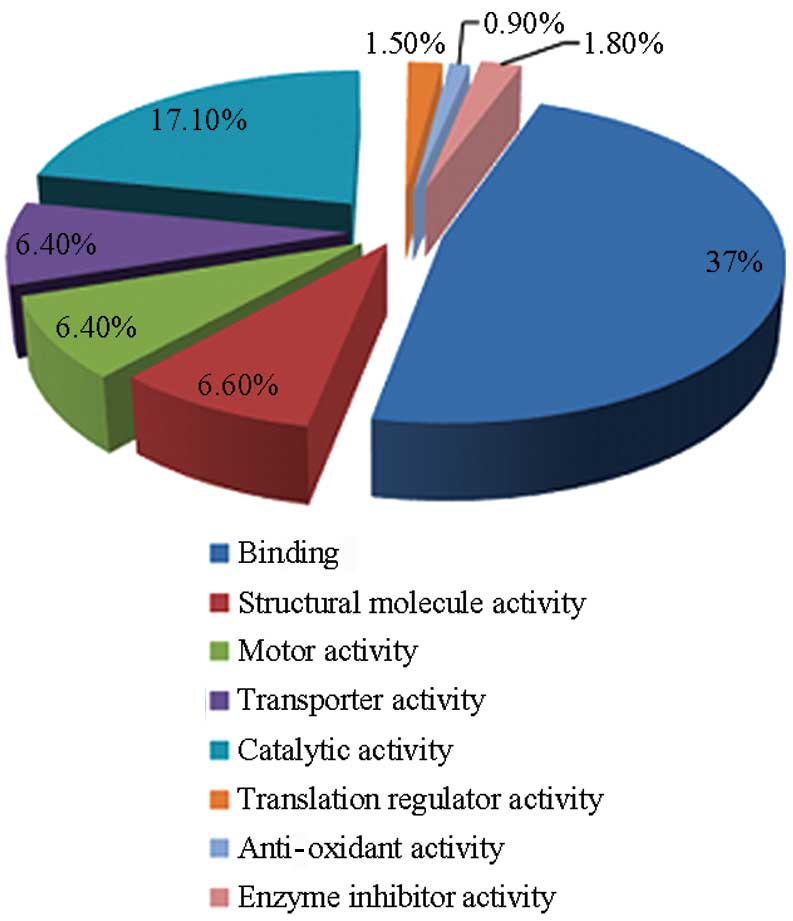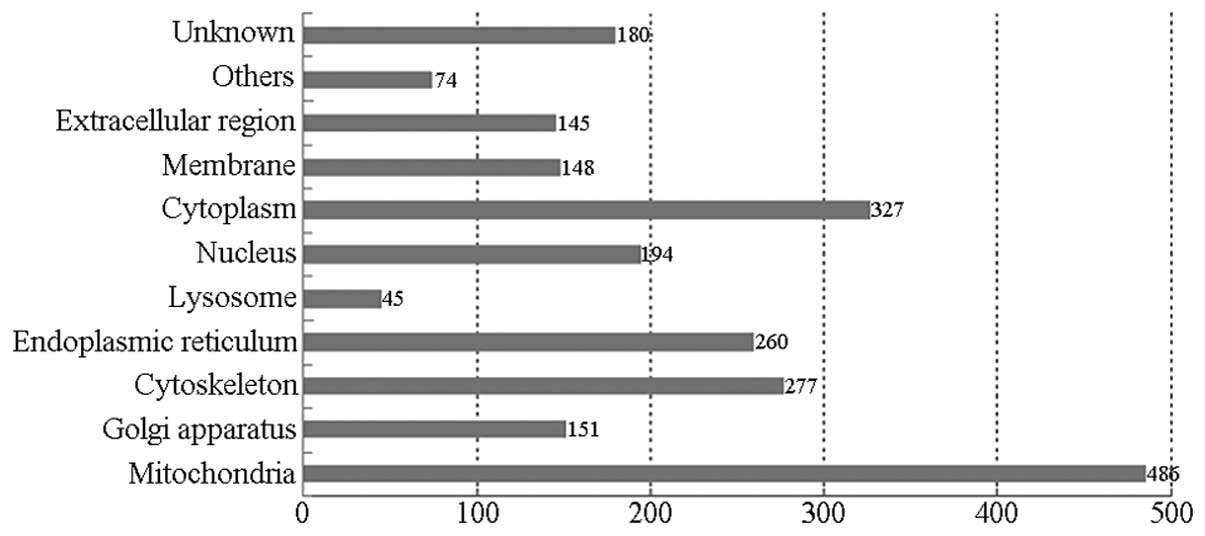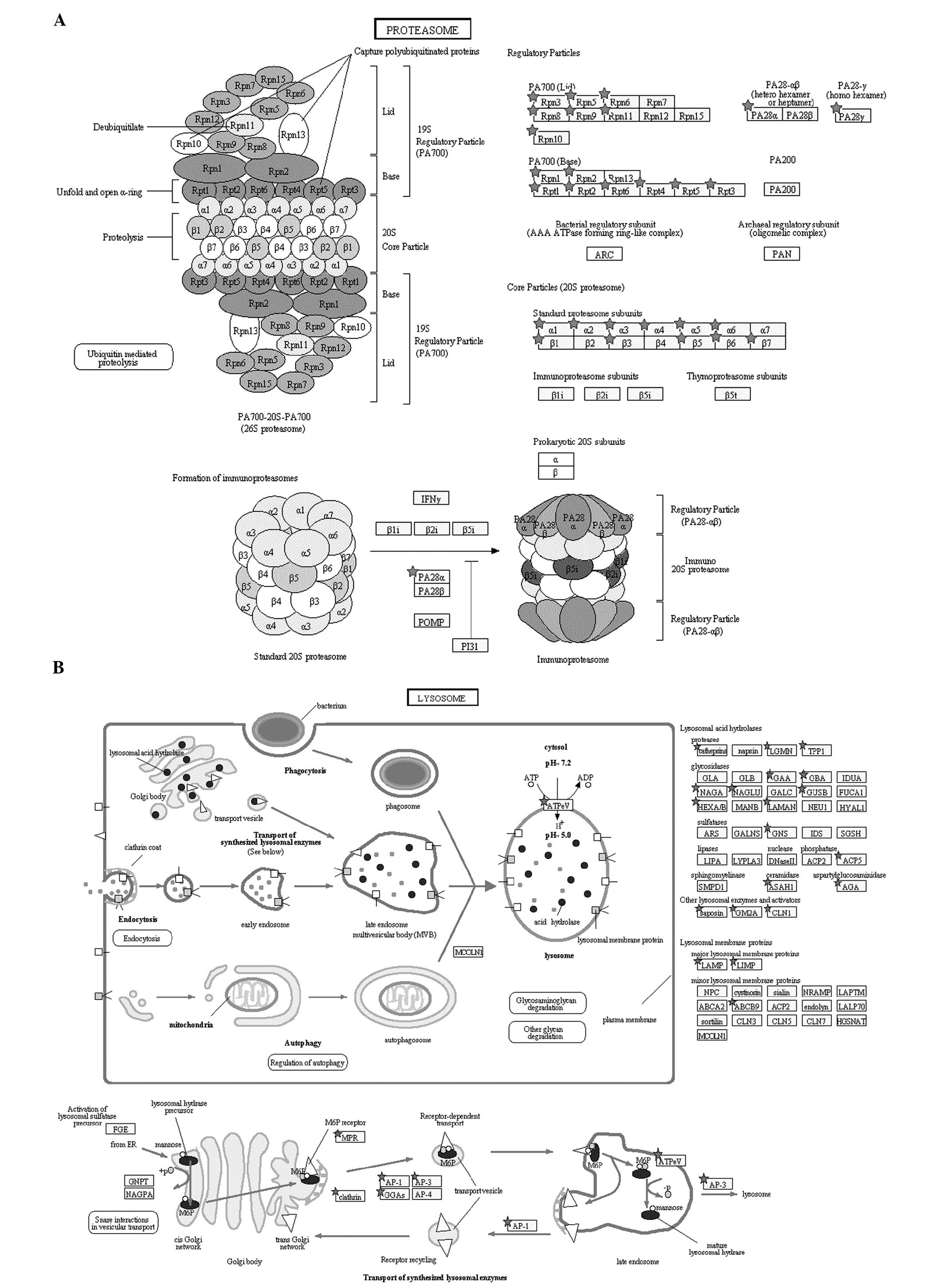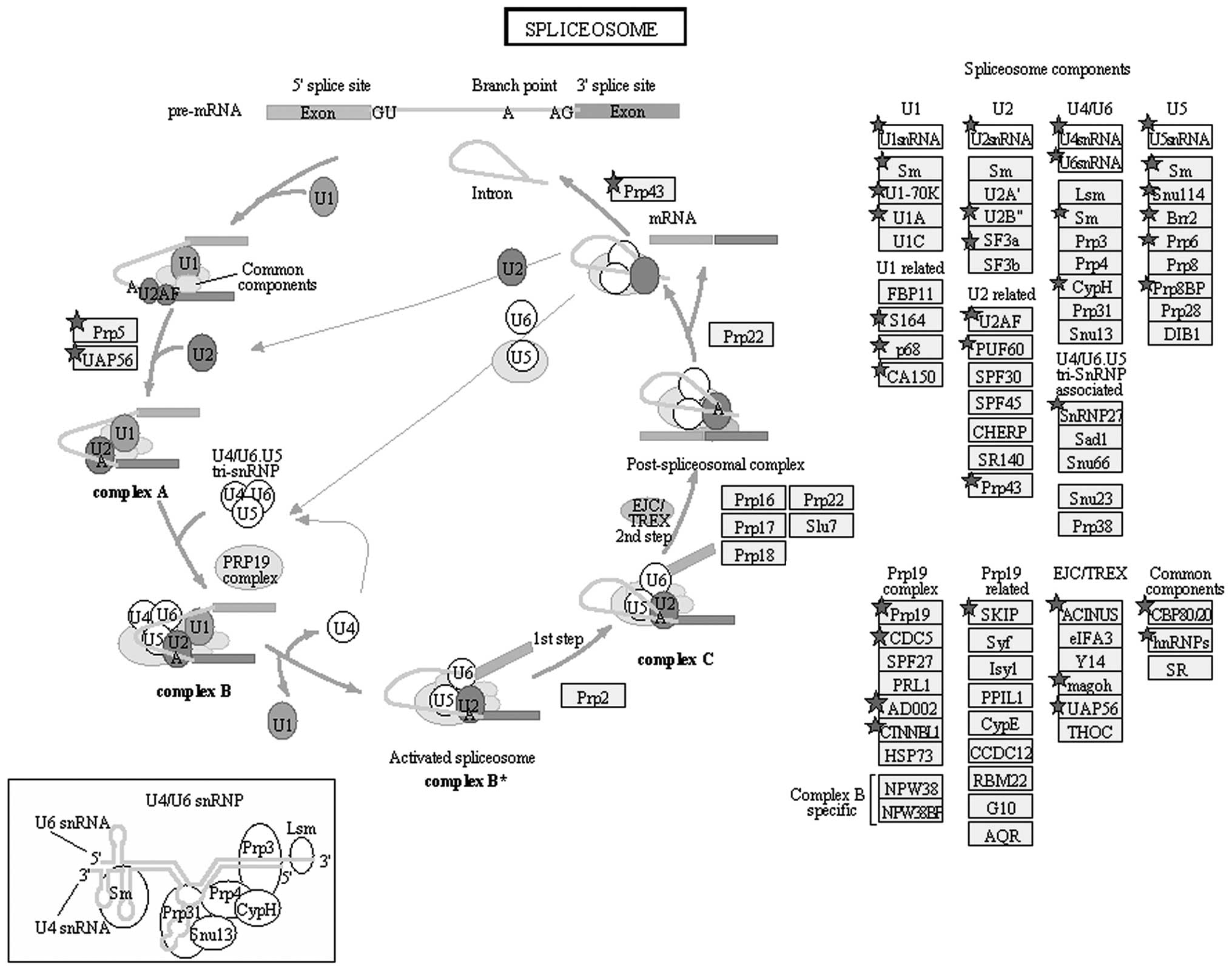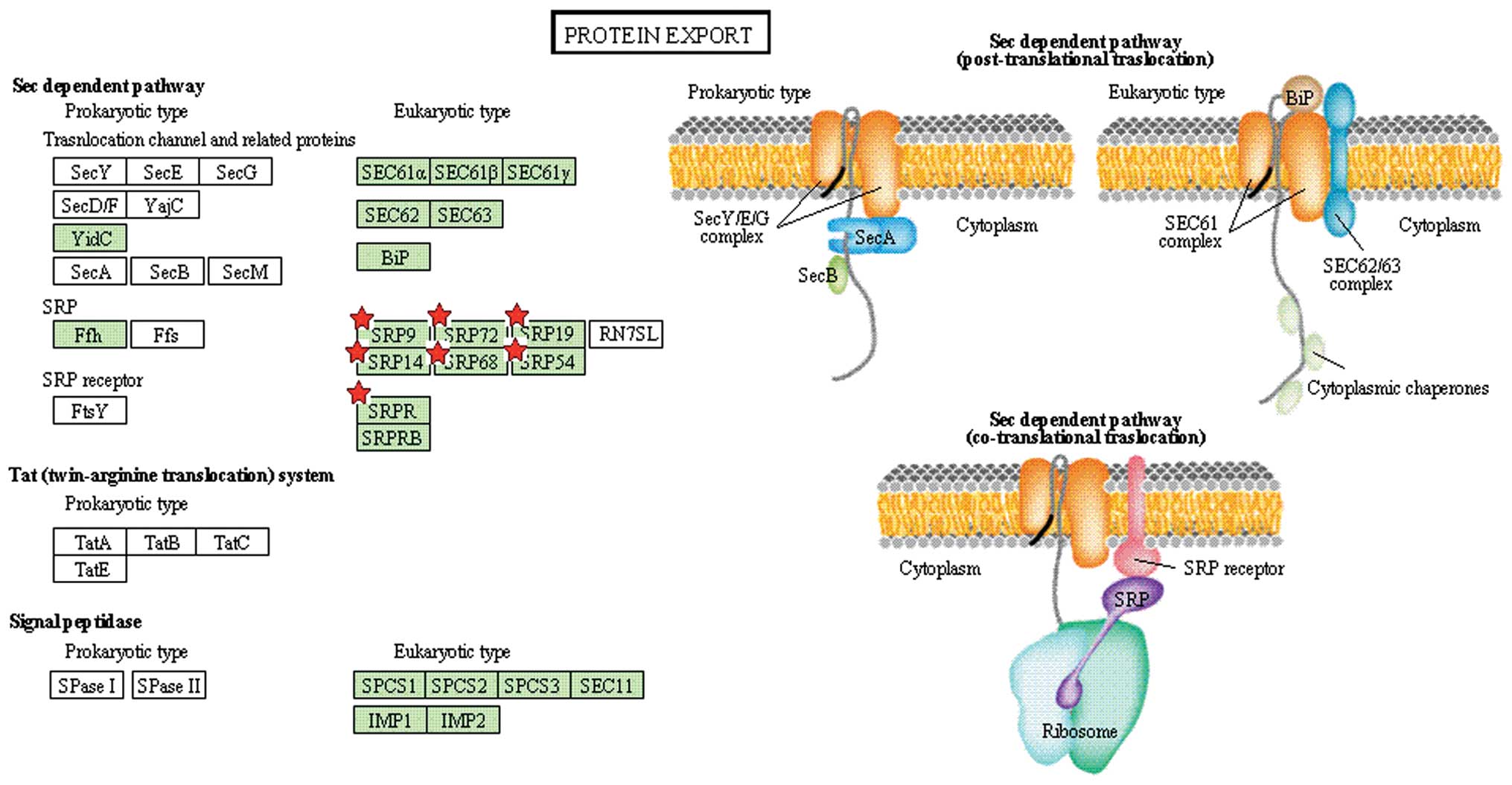|
1
|
Blanco-Rodriguez J and Martinez-Garcia C:
Spontaneous germ cell death in the testis of the adult rat takes
the form of apoptosis: re-evaluation of cell types that exhibit the
ability to die during spermatogenesis. Cell Prolif. 29:13–31. 1996.
View Article : Google Scholar
|
|
2
|
Jan SZ, Hamer G, Repping S, de Rooij DG,
van Pelt AM and Vormer TL: Molecular control of rodent
spermatogenesis. Biochim Biophys Acta. 1822.1838–1850.
2012.PubMed/NCBI
|
|
3
|
Anway MD, Li Y, Ravindranath N, Dym M and
Griswold MD: Expression of testicular germ cell genes identified by
differential display analysis. J Androl. 24:173–184.
2003.PubMed/NCBI
|
|
4
|
O’Shaughnessy PJ, Fleming L, Baker PJ,
Jackson G and Johnston H: Identification of developmentally
regulated genes in the somatic cells of the mouse testis using
serial analysis of gene expression. Biol Reprod. 69:797–808.
2003.
|
|
5
|
Schlecht U, Demougin P, Koch R, et al:
Expression profiling of mammalian male meiosis and gametogenesis
identifies novel candidate genes for roles in the regulation of
fertility. Mol Biol Cell. 15:1031–1043. 2004. View Article : Google Scholar : PubMed/NCBI
|
|
6
|
Kovac JR, Pastuszak AW and Lamb DJ: The
use of genomics, proteomics, and metabolomics in identifying
biomarkers of male infertility. Fertil Steril. 99:998–1007. 2013.
View Article : Google Scholar : PubMed/NCBI
|
|
7
|
Baker MA, Hetherington L, Reeves GM and
Aitken RJ: The mouse sperm proteome characterized via IPG strip
prefractionation and LC-MS/MS identification. Proteomics.
8:1720–1730. 2008. View Article : Google Scholar
|
|
8
|
Baker MA, Reeves G, Hetherington L and
Aitken RJ: Analysis of proteomic changes associated with sperm
capacitation through the combined use of IPG-strip
pre-fractionation followed by RP chromatography LC-MS/MS analysis.
Proteomics. 10:482–495. 2010. View Article : Google Scholar : PubMed/NCBI
|
|
9
|
Oliva R and Castillo J: Proteomics and the
genetics of sperm chromatin condensation. Asian J Androl. 13:24–30.
2011. View Article : Google Scholar : PubMed/NCBI
|
|
10
|
Paz M, Morin M and Del Mazo J: Proteome
profile changes during mouse testis development. Comp Biochem
Physiol Part D Genomics Proteomics. 1:404–415. 2006. View Article : Google Scholar : PubMed/NCBI
|
|
11
|
Xun Z, Kaufman TC and Clemmer DE: Stable
isotope labeling and label-free proteomics of Drosophila
parkin null mutants. J Proteome Res. 8:4500–4510. 2009.
View Article : Google Scholar : PubMed/NCBI
|
|
12
|
Cravatt BF, Simon GM and Yates JR III: The
biological impact of mass-spectrometry-based proteomics. Nature.
450:991–1000. 2007. View Article : Google Scholar : PubMed/NCBI
|
|
13
|
Bauer KM, Lambert PA and Hummon AB:
Comparative label-free LC-MS/MS analysis of colorectal
adenocarcinoma and metastatic cells treated with 5-fluorouracil.
Proteomics. 12:1928–1937. 2012. View Article : Google Scholar : PubMed/NCBI
|
|
14
|
Zhu W, Smith JW and Huang CM: Mass
spectrometry-based label-free quantitative proteomics. J Biomed
Biotechnol. 2010:8405182010.PubMed/NCBI
|
|
15
|
Clough T, Thaminy S, Ragg S, Aebersold R
and Vitek O: Statistical protein quantification and significance
analysis in label-free LC-MS experiments with complex designs. BMC
Bioinformatics. 13:S62012. View Article : Google Scholar : PubMed/NCBI
|
|
16
|
Merl J, Ueffing M, Hauck SM and von Toerne
C: Direct comparison of MS-based label-free and SILAC quantitative
proteome profiling strategies in primary retinal Muller cells.
Proteomics. 12:1902–1911. 2012. View Article : Google Scholar : PubMed/NCBI
|
|
17
|
Niehl A, Zhang ZJ, Kuiper M, Peck SC and
Heinlein M: Label-free quantitative proteomic analysis of systemic
responses to local wounding and virus infection in Arabidopsis
thaliana. J Proteome Res. 12:2491–2503. 2013. View Article : Google Scholar : PubMed/NCBI
|
|
18
|
Bellve AR, Cavicchia JC, Millette CF,
O’Brien DA, Bhatnagar YM and Dym M: Spermatogenic cells of the
prepuberal mouse. Isolation and morphological characterization. J
Cell Biol. 74:68–85. 1977. View Article : Google Scholar : PubMed/NCBI
|
|
19
|
Keller A, Nesvizhskii AI, Kolker E and
Aebersold R: Empirical statistical model to estimate the accuracy
of peptide identifications made by MS/MS and database search. Anal
Chem. 74:5383–5392. 2002. View Article : Google Scholar
|
|
20
|
Nesvizhskii AI, Keller A, Kolker E and
Aebersold R: A statistical model for identifying proteins by tandem
mass spectrometry. Anal Chem. 75:4646–4658. 2003. View Article : Google Scholar : PubMed/NCBI
|
|
21
|
Wilkins MR, Sanchez JC, Gooley AA, et al:
Progress with proteome projects: why all proteins expressed by a
genome should be identified and how to do it. Biotechnol Genet Eng
Rev. 13:19–50. 1996. View Article : Google Scholar : PubMed/NCBI
|
|
22
|
Wright PC, Noirel J, Ow SY and Fazeli A: A
review of current proteomics technologies with a survey on their
widespread use in reproductive biology investigations.
Theriogenology. 77:738–765. 2012. View Article : Google Scholar
|
|
23
|
Macleod G and Varmuza S: The application
of proteomic approaches to the study of mammalian spermatogenesis
and sperm function. FEBS J. 280:5635–5651. 2013. View Article : Google Scholar : PubMed/NCBI
|
|
24
|
Gardiner-Garden M, Ballesteros M, Gordon M
and Tam PP: Histone- and protamine-DNA association: conservation of
different patterns within the beta-globin domain in human sperm.
Mol Cell Biol. 18:3350–3356. 1998.PubMed/NCBI
|
|
25
|
Miki K: Energy metabolism and sperm
function. Soc Reprod Fertil Suppl. 65:309–325. 2007.PubMed/NCBI
|
|
26
|
Bajpai M, Gupta G and Setty BS: Changes in
carbohydrate metabolism of testicular germ cells during meiosis in
the rat. Eur J Endocrinol. 138:322–327. 1998. View Article : Google Scholar : PubMed/NCBI
|
|
27
|
Nakamura M, Okinaga S and Arai K:
Metabolism of round spermatids: kinetic properties of pyruvate
kinase. Andrologia. 19:91–96. 1987. View Article : Google Scholar : PubMed/NCBI
|
|
28
|
Groettrup M, Pelzer C, Schmidtke G and
Hofmann K: Activating the ubiquitin family: UBA6 challenges the
field. Trends Biochem Sci. 33:230–237. 2008. View Article : Google Scholar : PubMed/NCBI
|
|
29
|
Pelzer C and Groettrup M: FAT10: Activated
by UBA6 and functioning in protein degradation. Subcell Biochem.
54:238–246. 2010. View Article : Google Scholar : PubMed/NCBI
|
|
30
|
Jin J, Li X, Gygi SP and Harper JW: Dual
E1 activation systems for ubiquitin differentially regulate E2
enzyme charging. Nature. 447:1135–1138. 2007. View Article : Google Scholar : PubMed/NCBI
|
|
31
|
Kopanja D, Roy N, Stoyanova T, et al:
Cul4A is essential for spermatogenesis and male fertility. Dev
Biol. 352:278–287. 2011. View Article : Google Scholar : PubMed/NCBI
|
|
32
|
Yi YJ, Manandhar G, Sutovsky M, et al:
Ubiquitin C-terminal hydrolase-activity is involved in sperm
acrosomal function and anti-polyspermy defense during porcine
fertilization. Biol Reprod. 77:780–793. 2007. View Article : Google Scholar
|
|
33
|
Mtango NR, Sutovsky M, Susor A, Zhong Z,
Latham KE and Sutovsky P: Essential role of maternal UCHL1 and
UCHL3 in fertilization and preimplantation embryo development. J
Cell Physiol. 227:1592–1603. 2012. View Article : Google Scholar : PubMed/NCBI
|
|
34
|
Tanaka H and Baba T: Gene expression in
spermiogenesis. Cell Mol Life Sci. 62:344–354. 2005. View Article : Google Scholar
|
|
35
|
Ito C, Yamatoya K, Yoshida K, et al:
Integration of the mouse sperm fertilization-related protein
equatorin into the acrosome during spermatogenesis as revealed by
super-resolution and immunoelectron microscopy. Cell Tissue Res.
352:739–750. 2013. View Article : Google Scholar
|
|
36
|
Dean KA, von Ahsen O, Gorlich D and Fried
HM: Signal recognition particle protein 19 is imported into the
nucleus by importin 8 (RanBP8) and transportin. J Cell Sci.
114:3479–3485. 2001.PubMed/NCBI
|
|
37
|
van Nues RW, Leung E, McDonald JC,
Dantuluru I and Brown JD: Roles for Srp72p in assembly, nuclear
export and function of the signal recognition particle. RNA Biol.
5:73–83. 2008.PubMed/NCBI
|
|
38
|
Sperry AO: The dynamic cytoskeleton of the
developing male germ cell. Biol Cell. 104:297–305. 2012. View Article : Google Scholar : PubMed/NCBI
|
|
39
|
Sun X, Kovacs T, Hu YJ and Yang WX: The
role of actin and myosin during spermatogenesis. Mol Biol Rep.
38:3993–4001. 2011. View Article : Google Scholar : PubMed/NCBI
|





